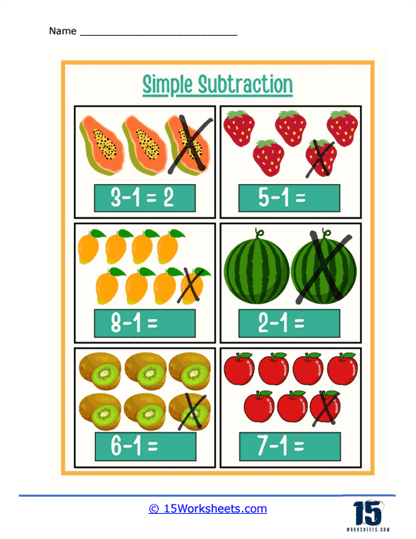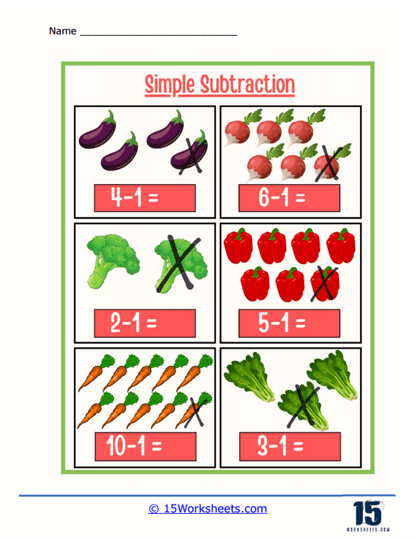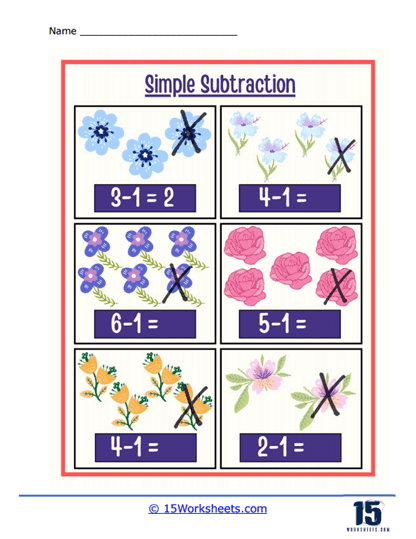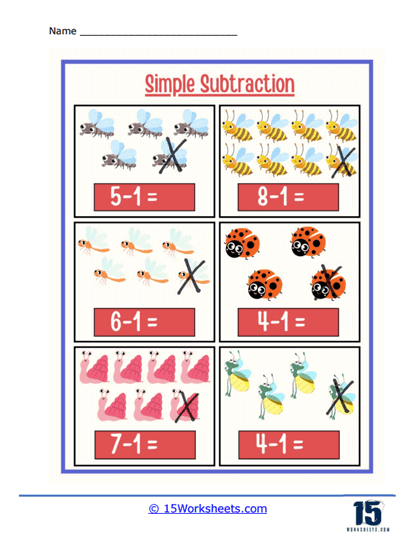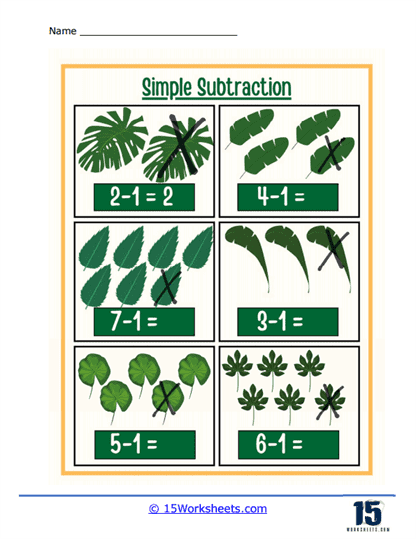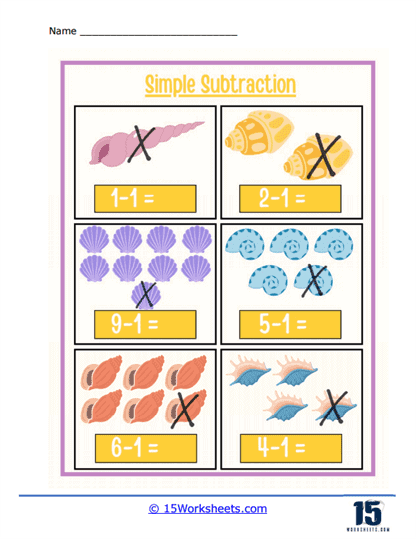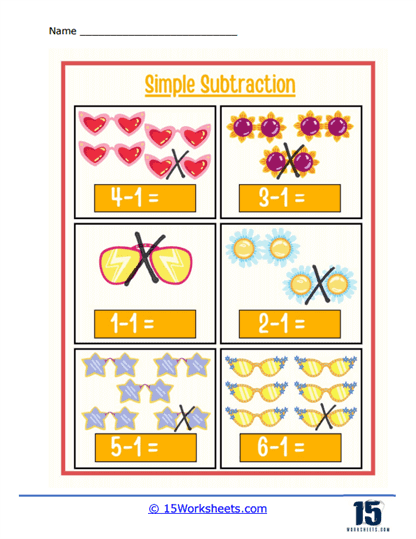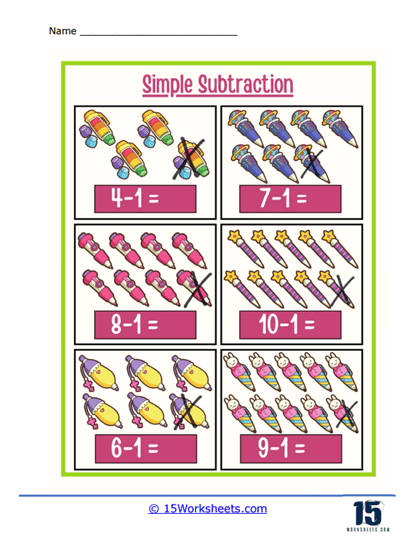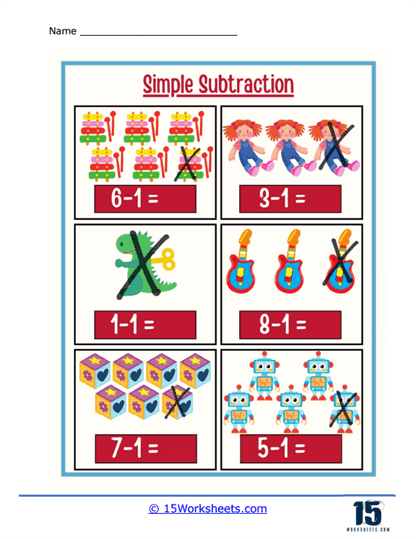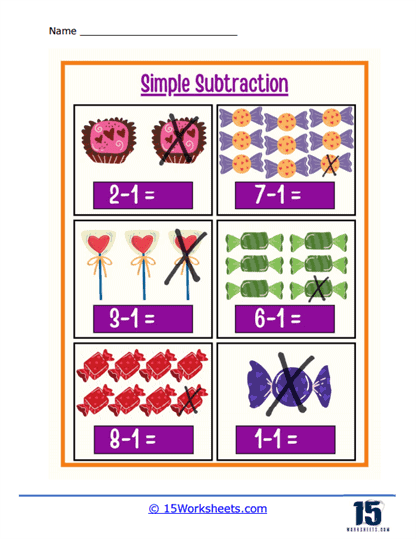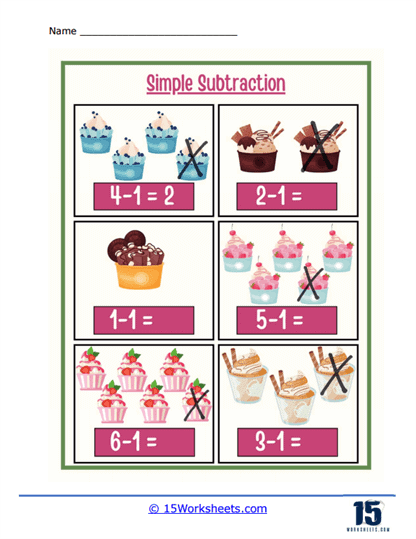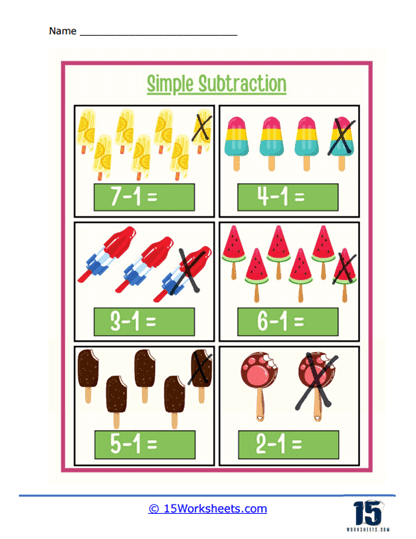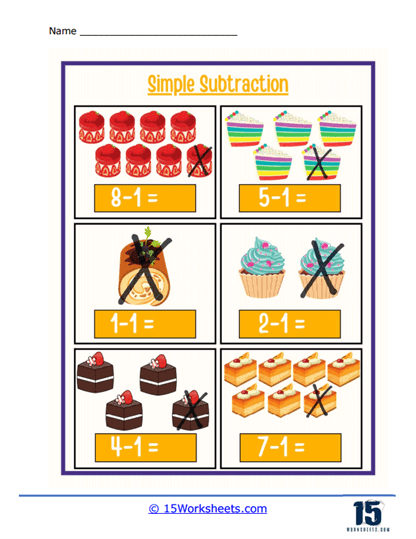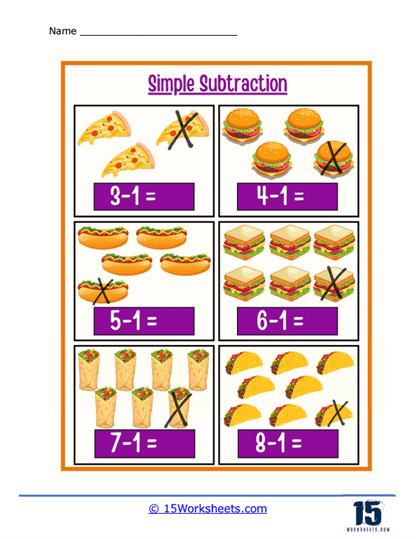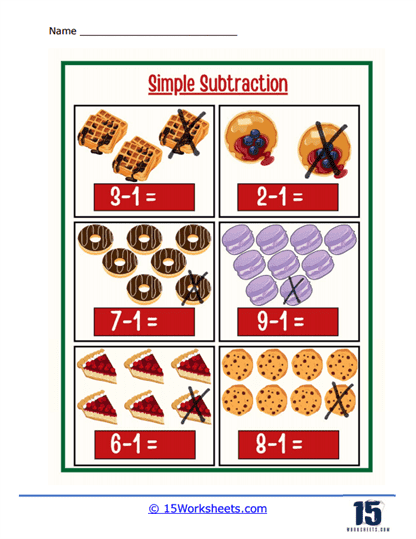Removing 1 Worksheets
About These 15 Worksheets
These worksheets are designed to help children practice and develop their subtraction skills, specifically subtracting the number 1 from various numbers. These worksheets include a range of activities and exercises that provide opportunities for children to practice subtracting 1 in different contexts. Here are a few examples types of exercises that you will find in these removing 1 worksheets:
Subtraction Equations – Children are presented with subtraction equations where they need to subtract 1 from a given number. For example, 7 – 1 = __.
Number Lines – Worksheets may include number lines with a starting point and an endpoint, and children have to count backwards by 1 to determine the number that is one less than the given number.
Objects or Pictures – These worksheets may feature pictures or objects, and children are asked to remove one object from each set to find the new quantity.
Word Problems – Worksheets may present word problems that involve removing 1 from a certain quantity. Children have to read the problem, identify the relevant numbers, and subtract 1 to find the solution.
Fill in the Blanks – Children may be given a series of numbers, and they have to fill in the missing number that is one less than the given number.
The overall goal of these worksheets is to introduce students to the concept of the basic math operation of subtraction.
How to Introduce the Concept of Subtraction
Introducing the concept of subtraction to children is a crucial stepping stone in their mathematical learning process. While it might seem challenging initially, several creative and engaging strategies can make it an enjoyable experience for the children.
One such strategy is storytelling, an age-old method that children love and can easily relate to. Let’s say you weave a story around five apples hanging from a tree. If a playful bird swoops down and carries away two of those apples to its nest, how many apples remain on the tree? This engaging narrative can serve as a visual backdrop for children, aiding them in grasping the abstract concept of subtraction.
Yet, not all children learn the same way; some kids are tactile learners, preferring a more hands-on approach. For these kids, the use of tangible objects, such as Lego bricks, pebbles, or even coins, can make the subtraction process more concrete. For instance, you can start by placing ten Lego bricks in a row, then remove three, and ask your child how many bricks remain. This activity not only enhances their counting skills but also solidifies the idea of ‘taking away,’ which is the essence of subtraction.
Sometimes, you don’t even need external objects. A simple teaching aid is right at the tips of your fingers – literally. The “fingers math” technique is a classic yet effective way of demonstrating subtraction. Suppose you hold up five fingers and fold two down, asking your child how many are still standing. This approach is handy because your child will always have their “math tools” available, even if there’s no paper or pencil in sight.
Another powerful tool in your teaching kit can be a number line. A number line can visually illustrate subtraction for children who are more visually inclined. For instance, draw a number line that goes from 0 to 10. Then, you can show your child how to start at 7 and move three steps backward, asking where they land.
Once children gain a basic understanding of subtraction, pictures can provide more advanced practice. You can draw a collection of shapes, like circles or squares, and then cross some out, visually demonstrating the process of ‘taking away.’
As your child’s understanding of subtraction deepens, the introduction of word problems can contextualize subtraction in everyday scenarios. Consider a problem like this: “There were ten cookies on the plate. After munching on three, how many cookies are left?” Such word problems can enhance children’s analytical skills and help them realize the practical applications of subtraction in their day-to-day lives.
Subtraction songs and rhymes are another innovative tool that children might find intriguing. Numerous educational songs and rhymes available online offer a playful and tuneful approach to learning subtraction. Music can make the learning process more engaging, making these concepts stick in children’s minds long-term.
Finally, we must not overlook the power of digital learning tools in today’s tech-savvy age. Numerous educational games and applications aim to make learning subtraction an entertaining endeavor. These digital platforms can complement traditional teaching methods, providing children with a balanced and versatile learning experience.
Above all, remember that each child has a unique learning pace. Therefore, patience, encouragement, and appreciation are crucial during this learning process. Ensure the learning journey remains enjoyable rather than transforming into a source of stress. Gradually moving from simpler problems to more complex ones as the child’s understanding evolves will ensure a smooth and steady path towards mastering subtraction.

